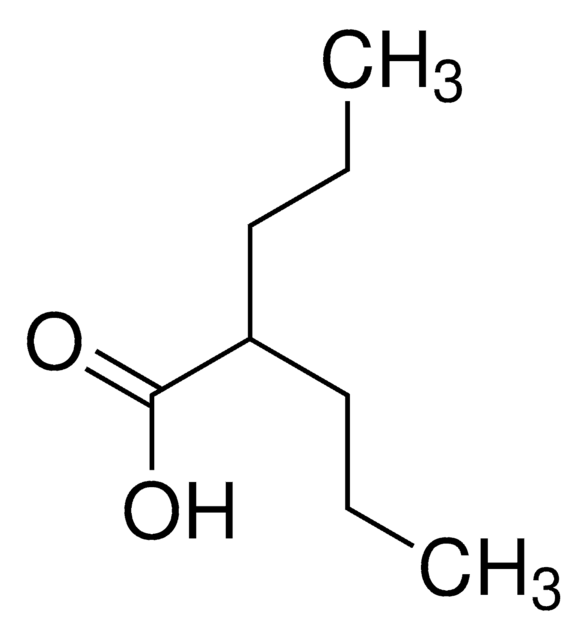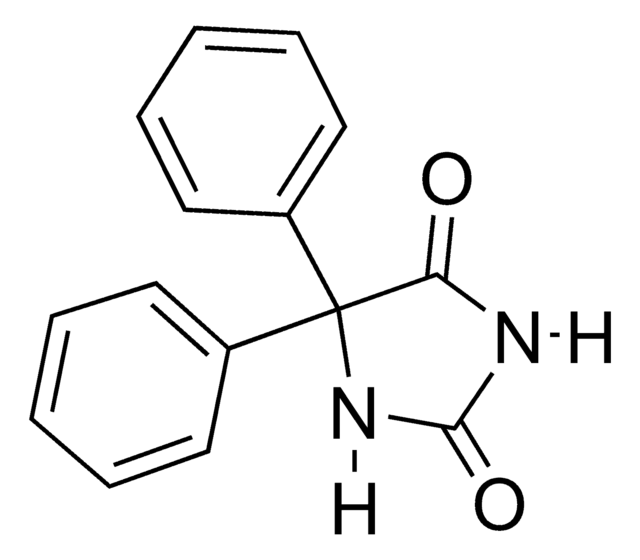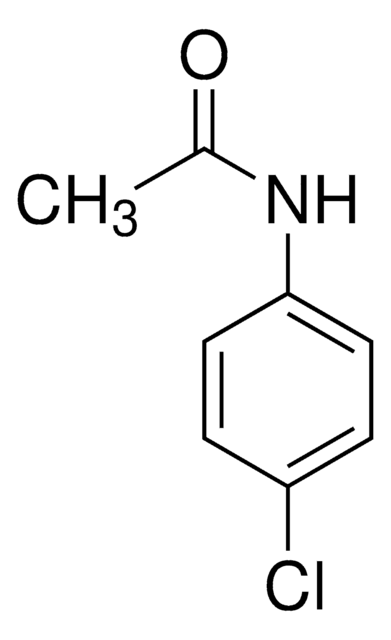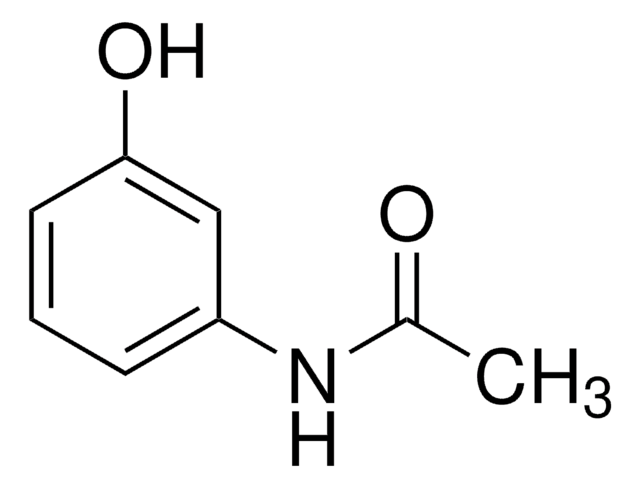A-064
Acetaminophen solution
1.0 mg/mL in methanol, ampule of 1 mL, certified reference material, Cerilliant®
About This Item
Produits recommandés
Qualité
certified reference material
Niveau de qualité
Forme
liquid
Caractéristiques
SNAP-N-SPIKE®, SNAP-N-SHOOT®
Conditionnement
ampule of 1 mL
Fabricant/nom de marque
Cerilliant®
Concentration
1.0 mg/mL in methanol
Technique(s)
gas chromatography (GC): suitable
liquid chromatography (LC): suitable
Application(s)
forensics and toxicology
Format
single component solution
Température de stockage
−20°C
Chaîne SMILES
CC(=O)Nc1ccc(O)cc1
InChI
1S/C8H9NO2/c1-6(10)9-7-2-4-8(11)5-3-7/h2-5,11H,1H3,(H,9,10)
Clé InChI
RZVAJINKPMORJF-UHFFFAOYSA-N
Informations sur le gène
human ... FAAH(2166) , PTGS1(5742) , PTGS2(5743) , TRPV1(7442)
Description générale
This substance is listed on the positive list of the EU regulation 10/2011 for plastics intended to come into contact with food. Find all available reference materials for compounds listed in 10/2011 here
Application
- Enhanced removal of acetaminophen from aqueous solutions: A study utilized kumquat peel-derived biochar supporting zeolitic imidazole framework-67 (ZIF-67) to improve peracetic acid activation for acetaminophen removal, demonstrating an innovative approach to wastewater treatment (Nguyen et al., 2024).
- Co-doped biochar for acetaminophen degradation: Research on Cu/N co-doped biochar activating peroxymonosulfate (PMS) revealed a non-radical degradation pathway for acetaminophen dominated by singlet oxygen and electron transfer, providing insights into sustainable environmental cleanup technologies (Wu et al., 2024).
- Biodegradation of pharmaceuticals including acetaminophen: A study on anaerobic co-metabolic biodegradation of pharmaceuticals and personal care products highlighted glycerol fermentation as a driving mechanism, offering a feasible strategy for managing environmental contamination from substances like acetaminophen (Carneiro et al., 2024).
Informations légales
Mention d'avertissement
Danger
Mentions de danger
Conseils de prudence
Classification des risques
Acute Tox. 3 Dermal - Acute Tox. 3 Inhalation - Acute Tox. 3 Oral - Flam. Liq. 2 - STOT SE 1
Organes cibles
Eyes
Code de la classe de stockage
3 - Flammable liquids
Classe de danger pour l'eau (WGK)
WGK 2
Point d'éclair (°F)
49.5 °F - closed cup
Point d'éclair (°C)
9.7 °C - closed cup
Certificats d'analyse (COA)
Recherchez un Certificats d'analyse (COA) en saisissant le numéro de lot du produit. Les numéros de lot figurent sur l'étiquette du produit après les mots "Lot" ou "Batch".
Déjà en possession de ce produit ?
Retrouvez la documentation relative aux produits que vous avez récemment achetés dans la Bibliothèque de documents.
Les clients ont également consulté
Notre équipe de scientifiques dispose d'une expérience dans tous les secteurs de la recherche, notamment en sciences de la vie, science des matériaux, synthèse chimique, chromatographie, analyse et dans de nombreux autres domaines..
Contacter notre Service technique









